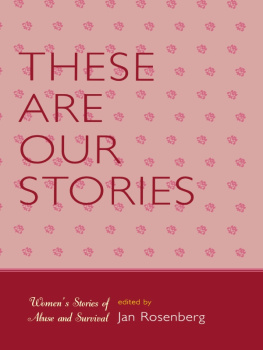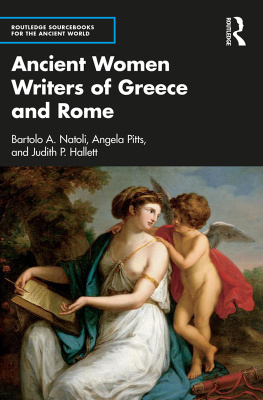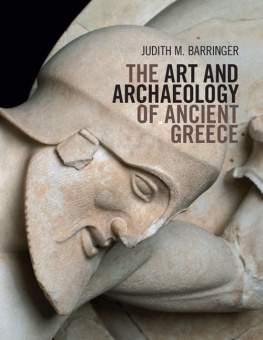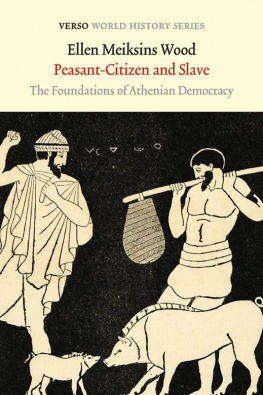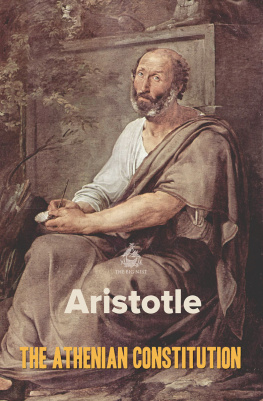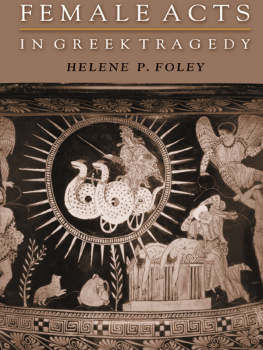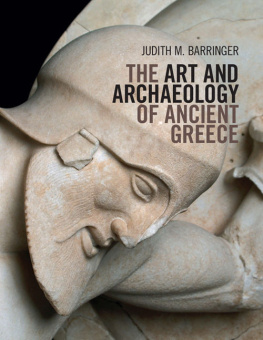
THE ATHENIAN WOMAN
Ceramics are an unparalleled resource of evidence about womens lives in ancient Greece, since they show a huge number of female types and activities. Yet it can be difficult to interpret the meanings of these images, especially when they seem to conflict with literary sources. This much-needed study shows that it is vital to see the vases as archaeology as well as art, because context is the key to understanding which of the images can stand as evidence for the real lives of women and which should be reassessed.
Sian Lewis considers the full gamut of female existence in classical Greece childhood and old age, unfree and foreign status, as well as the ageless woman characteristic of Athenian red-figure painting. Specific topics investigated include domestic labour, womens work outside the household, seclusion, status and relationships with men. Dr Lewis explores the reasons for the artistic focus on some areas of womens lives and the neglect of others. The text also engages with deeper issues of methodology and explores current debates about the portrayal of women in classical art.
Accessible, informative and lavishly illustrated with more than 150 photographs and line drawings, The Athenian Woman: an iconographic handbook is indispensable as a guide for students and a resource for academics in the disciplines of ancient gender, ancient history and classical art and archaeology.
Sian Lewis is Lecturer in Ancient History at the University of Wales, Cardiff. She is also the author of News and Society in the Greek Polis (1996).
THE ATHENIAN WOMAN
An iconographic handbook
Sian Lewis

First published 2002
by Routledge
2 Park Square, Milton Park, Abingdon, Oxon, OX14 4RN
Simultaneously published in the USA and Canada
by Routledge
270 Madison Ave, New York NY 10016
Routledge is an imprint of the Taylor & Francis Group
Transferred to Digital Printing 2005
2002 Sian Lewis
Typeset in Garamond by
Keystroke, Jacaranda Lodge, Wolverhampton
All rights reserved. No part of this book may be reprinted or reproduced
or utilised in any form or by any electronic, mechanical, or other means, now
known or hereafter invented, including photocopying and recording, or
in any information storage or retrieval system, without permission in
writing from the publishers.
British Library Cataloguing in Publication Data
A catalogue record for this book is available from the British Library
Library of Congress Cataloging in Publication Data
Lewis, Sian.
The Athenian woman: an iconographic handbook/Sian Lewis. p. cm.
Includes bibliographical references and index.
ISBN 0415232341ISBN 041523235X (pbk.)
1. WomanGreeceHistorySources.
2. WomanHistoryTo 500Sources. 3. Women in art.
4. Pottery, GreekThemes, motives. I. Title.
HQ1134 .L49 2002 2001058922
305.409495dc21
ISBN 0415232341 (hbk)
ISBN 041523235X (pbk)
ISBN 9781135128326 (epub)
CONTENTS
ILLUSTRATIONS
Note on illustrations
One can never provide as many illustrations as one would wish: I have therefore tried to illustrate representatively, and, where a pot is not illustrated, to make reference in the notes to other recent works or collections of images where an illustration can most easily be found.
In the interests of clarity, I have included in references to pots as much information as possible: current collection, Beazley catalogue number(s), attributed artist (if useful) and provenance. Where no provenance exists for a pot (the majority of cases), this is indicated by n.p.. The use of names of attributed painters is intended as a convenience, and should not be taken as a statement of belief in artists as individuals.
All line drawings (except figs. 1.2, 2.1, 2.25) are by Zadia Green, Z.A. Green 2001.
ACKNOWLEDGEMENTS
The writing of this book has been a long process, and I am pleased to be able to thank so many people who have assisted in different ways. I am grateful to the Arts and Humanities Research Board and to my own institution, the University of Wales Cardiff, for their support of the sabbatical which enabled me to complete the project. Many colleagues and students at Cardiff and elsewhere have contributed discussion and practical advice, particularly Nick Fisher, James Whitley, Robin Osborne, Stephen Mitchell, Paul Nicholson, Doug Peksa, Lloyd Llewellyn-Jones, Fiona Hobden and Esther Cox. My thanks are also due to Richard Stoneman, to Liz ODonnell as production editor, and to the anonymous reader for Routledge for comments on part of the manuscript. My greatest debt is to Catherine Bousfield, without whose patience and assistance such a complex project could not have been completed, and to Alan Fidler who, as copyeditor, saved me from more errors than I care to imagine.
Thomas Mannack of the Beazley Archive, Oxford, offered invaluable advice and assistance; the importance of the Beazley Archive in the researching of this book is hard to overestimate. I am also grateful to the many curators of museum collections all over the world who assisted with photographs and permissions, and in particular George Ziombakis (Museum of Fine Arts, Houston), Christopher Atkins (Museum of Fine Arts, Boston), Karin Sowada (Nicholson Museum, Sydney), Amy Smith (University of Reading), Simon Bean (Liverpool Museum), Mette Catharina Hermannsen (National Museum of Denmark), Nicole G. Finzer (Art Institute of Chicago), Margaret Evangelista (Accademia dei Lincei, Rome), Giorgia Masone (DAI Roma), Michael Vickers (Ashmolean Museum, Oxford), and Dr H.A. Cahn. Professor Franois Lissarrague very kindly gave permission to reproduce several of his drawings. All other line drawings were prepared by Zadia Green, whose enthusiasm was as important to me as her artistic skill.
The support of family and friends has been invaluable to me throughout the project; most of all, no one could have been more patient and encouraging than my partner Robin MacKenzie. I said many times that this book would never be finished, but now it is.
Sian Lewis
INTRODUCTION
Fountains and fictions
The black-figure hydria illustrated in fig. 0.1 was made and painted in Athens c.520 BC . A hydria is a type of container designed for carrying water, having two horizontal handles for lifting, and one vertical at the back for pouring. This example is now in the British Museum; its painter is identified as the A.D. Painter, to whom some ten other pots have been attributed. The illustration on the pot depicts women fetching water at a fountain-house. Four women, their flesh shown in added white paint, stand filling their water jars at animal-head and equestrian spouts, among the columns of the fountain. Two of them reach up to place garlands on the spouts, which are also decorated with branches. Three of the jars shown are the same type as the hydria itself, and two are more rounded shapes. The interpretation of this scene is usually presented as perfectly straightforward: it is a scene of everyday life, drawn from the painters own experience in Athens. The illustration of a fountain, and women fetching water from it, is an appropriate decoration for a water jar: the hydria illustrates its own function, and because hydriai were regularly used by women, a scene of women is doubly appropriate. The status of the women depicted offers a subject for debate based on their appearance and activity: are they slaves or free women?
Next page






